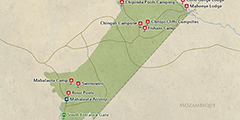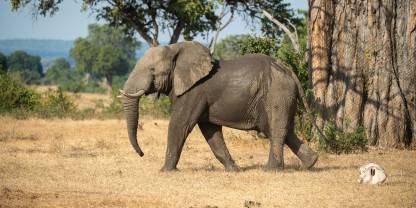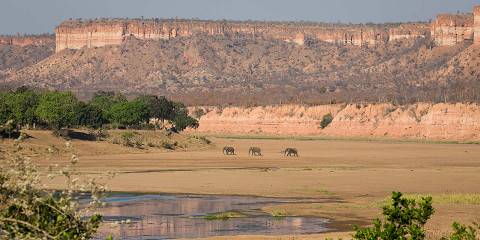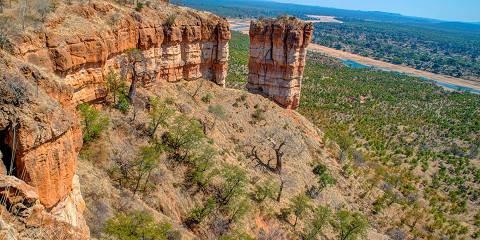Gonarezhou National Park, Zimbabwe’s second largest, is an underrated Big Five destination set within the Great Limpopo Transfrontier Park, an area that also incorporates South Africa’s Kruger National Park and parts of Mozambique. Historically wildlife densities have suffered as a result of poaching. Under the joint management of the Frankfurt Zoological Society since 2017, however, Gonarezhou has been transformed into one of Africa’s best-kept wildlife-viewing secrets.

-
Best Time To Go
- June to October (Middle to end of the Dry season)
-
High Season
- June to August (The park is rarely busy)
-
Size
- 5,000km² / 1,930mi²
-
Altitude
-
165-530m /541-1,739ft
 View Photos
View Photos
 View Photos
+24
Photos
View Photos
+24
Photos
 Open Map
Open Map
Pros & Cons
- Huge, untamed wilderness area
- Magnificent scenery includes the Runde and Save Rivers and Chilojo Cliffs
- Great wildlife diversity with the Big Five and abundant elephants
- Excellent birding destination
- Few visitors and it never gets busy
- are available
- Wildlife densities are low (but swiftly improving)
- Limited upmarket accommodation options
- Internal roads require 4x4 vehicle and some may close in the Wet season
Wildlife
All of the Big Five are present following the reintroduction of black rhino (for the second time) in 2021. Gonarezhou’s elephant population is one of the densest in the world, but maternal herds are sometimes quite skittish. The park also supports large numbers of buffalo, zebra and wildebeest, while other antelopes include nyala, greater kudu, eland, roan and sable. Wild dogs are occasionally spotted as well.
More about Gonarezhou’s wildlifeScenery
The scenic highlight of Gonarezhou is Chilojo, a long red sandstone cliff that towers above the Runde River and is devastatingly spectacular whether viewed from above or below. More understated is the Save-Runde Confluence, which comprises a grassy interspersed with palm-lined pans, stately old baobabs and beautiful spreads of mahogany, ironwood and winterthorn. The rest of the park supports an endless cover of combretum and .
Activities
For those on a self-drive safari, the only activity within the park is , which are most rewarding around Chipinda Pools, Chilojo Cliffs and the Save-Runde Confluence. For those on a professionally guided safari or based at Chilo Gorge (the only lodge servicing the park), guided are highly recommended and offer a better chance of tracking big cats. A highlight for those staying at Chilo Gorge is overlooking Chivilila Falls.
Weather & Climate
The weather at Gonarezhou is sunny and bright throughout the Dry season (April to October), though you need warm clothing to deal with the chill of early morning game drives. The Wet season (November to March) sees the temperature rise and storm clouds spread across the sky on most afternoons.
More about the weather and climateBest Time To Visit
Wildlife viewing is most rewarding from June to October, during the middle and end of the Dry season, when the rains have ended and the vegetation has thinned out. Gonarezhou is generally closed for most of January and February, as roads often become impassable. You can visit at other times during the humid Wet season (which runs from November to March), but roads might still be in poor condition and animals are harder to find.
More about the best time to visit



